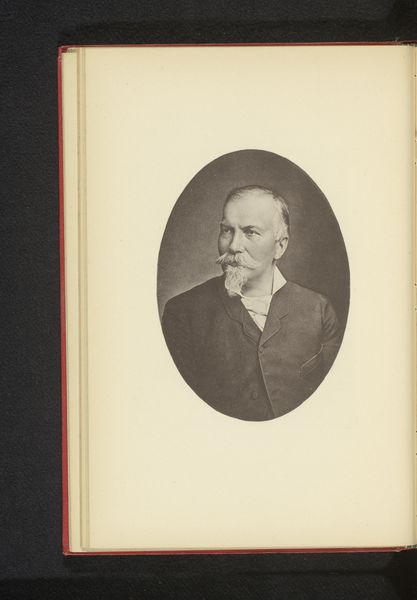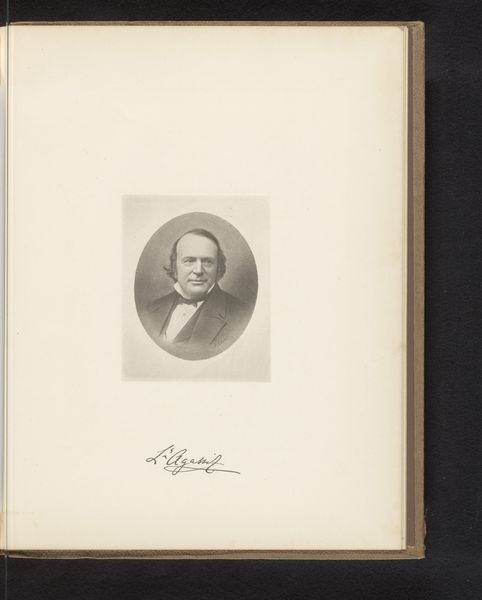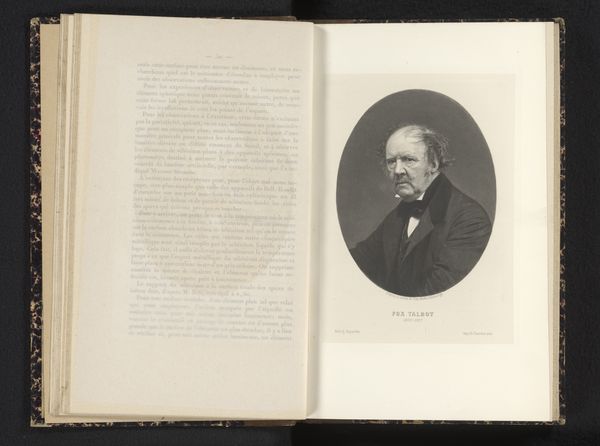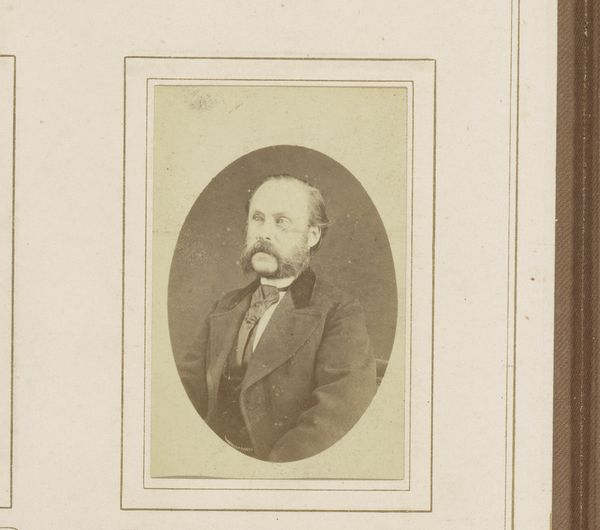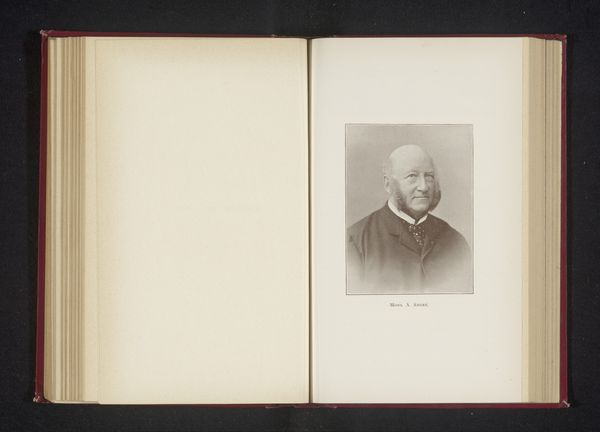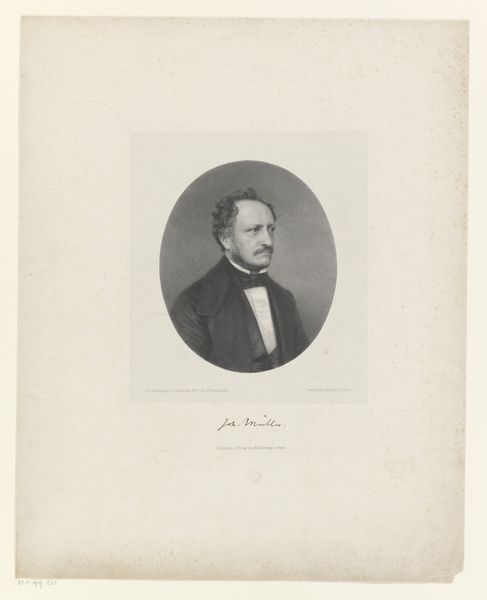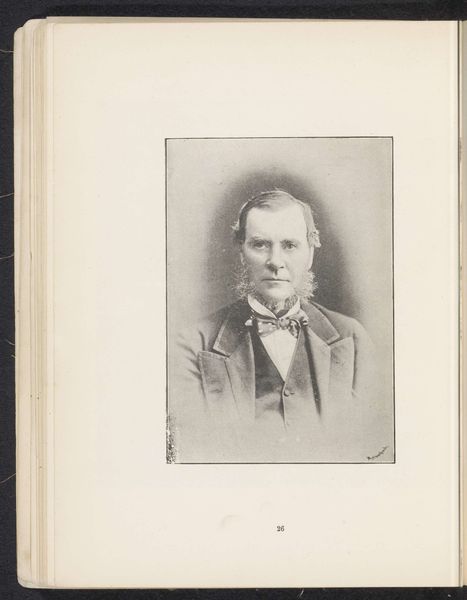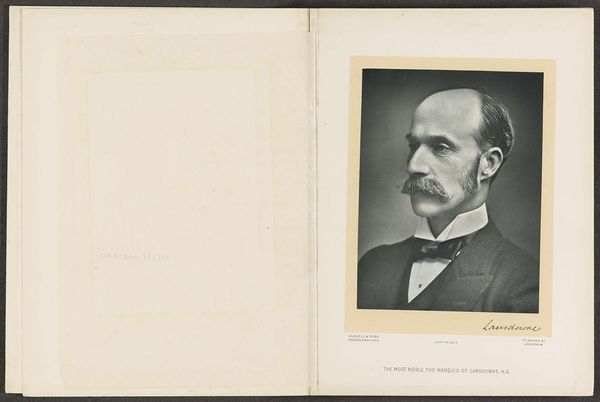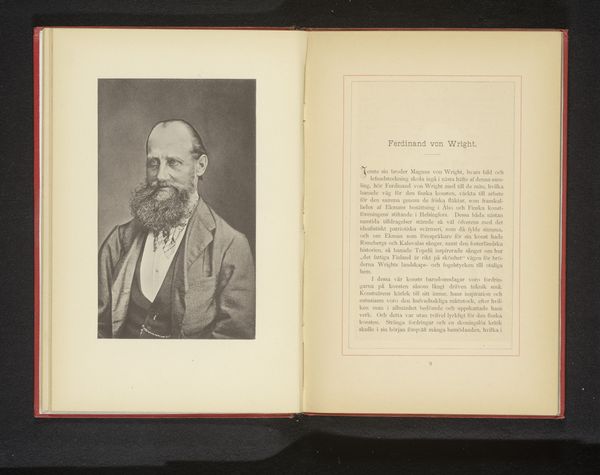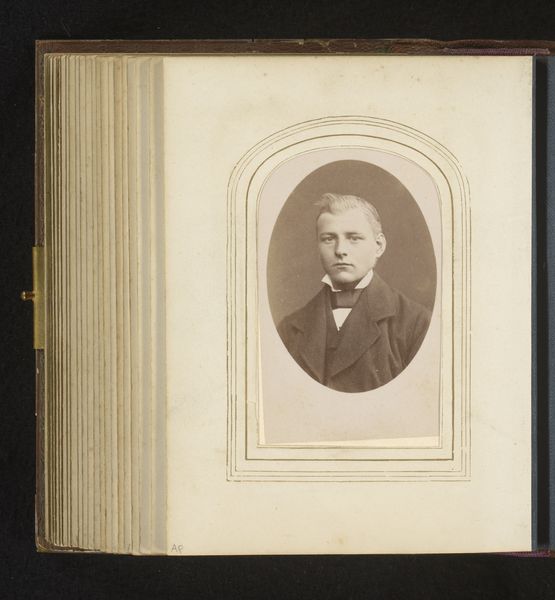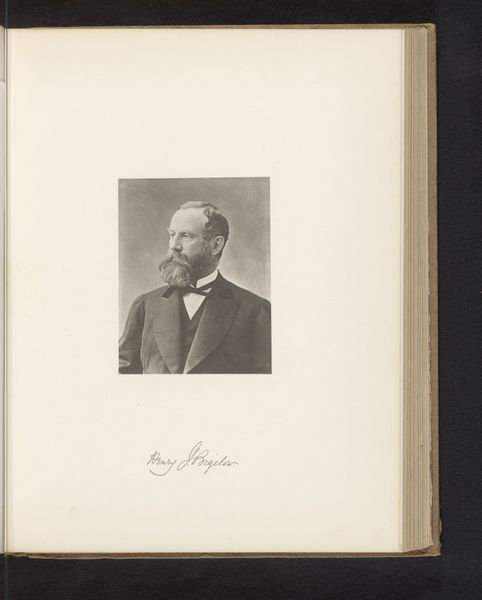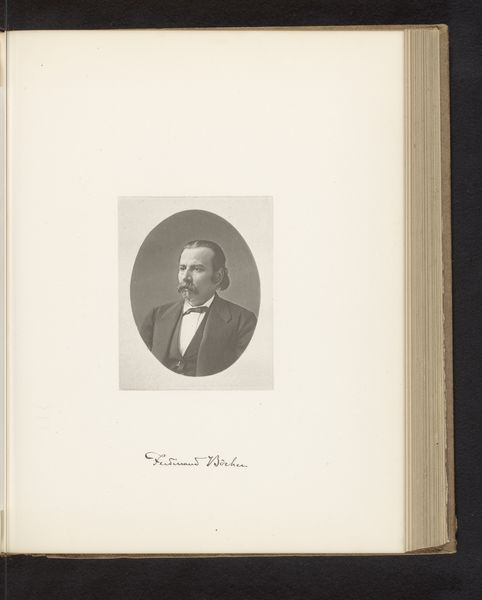
print, photography, gelatin-silver-print
#
portrait
# print
#
photography
#
gelatin-silver-print
Dimensions: height 108 mm, width 84 mm
Copyright: Rijks Museum: Open Domain
Editor: Here we have a gelatin silver print, "Portret van Johannes Takanen," dating from before 1883. It’s a photographic portrait. I'm struck by how this portrait uses an oval format—a bit old-fashioned, even then? What stands out to you? Curator: The oval format certainly speaks to an established visual language, a way of framing individuals within a canon. Think about what ovals evoke: mirrors, lockets, echoes of classical portraiture. The print is nestled in a book too; that makes it interesting. What cultural narratives are we meant to absorb along with the image of Johannes Takanen? Editor: That's a great point about the book context. So, is the placement adding another layer to how we perceive Takanen himself? Is he being elevated or memorialized in some way? Curator: Precisely! The book suggests permanence, a deliberate insertion into collective memory. Also, consider Takanen's attire, the soft tie, the hint of formality. How do those details function as signifiers? Is it trying to evoke an era of philosophers and poets? And why include his image? Editor: I hadn’t really considered it that way, but the portrait is almost operating as a kind of cultural artifact now, representing ideals beyond just the individual. Curator: Indeed. Early photography quickly assumed the cultural weight of traditional painted portraiture, inheriting all the coded messages embedded within that form. The question becomes: what is this image meant to signify for its original audience, and what does it convey to us now? Editor: Looking at it now, it's incredible how many layers of meaning can be embedded in what seems like a simple portrait. The format, the clothing, the context—they all contribute. Thanks for sharing your expertise! Curator: My pleasure. The continuous reading and rereading of visual signs are, after all, what keeps these images alive.
Comments
No comments
Be the first to comment and join the conversation on the ultimate creative platform.
